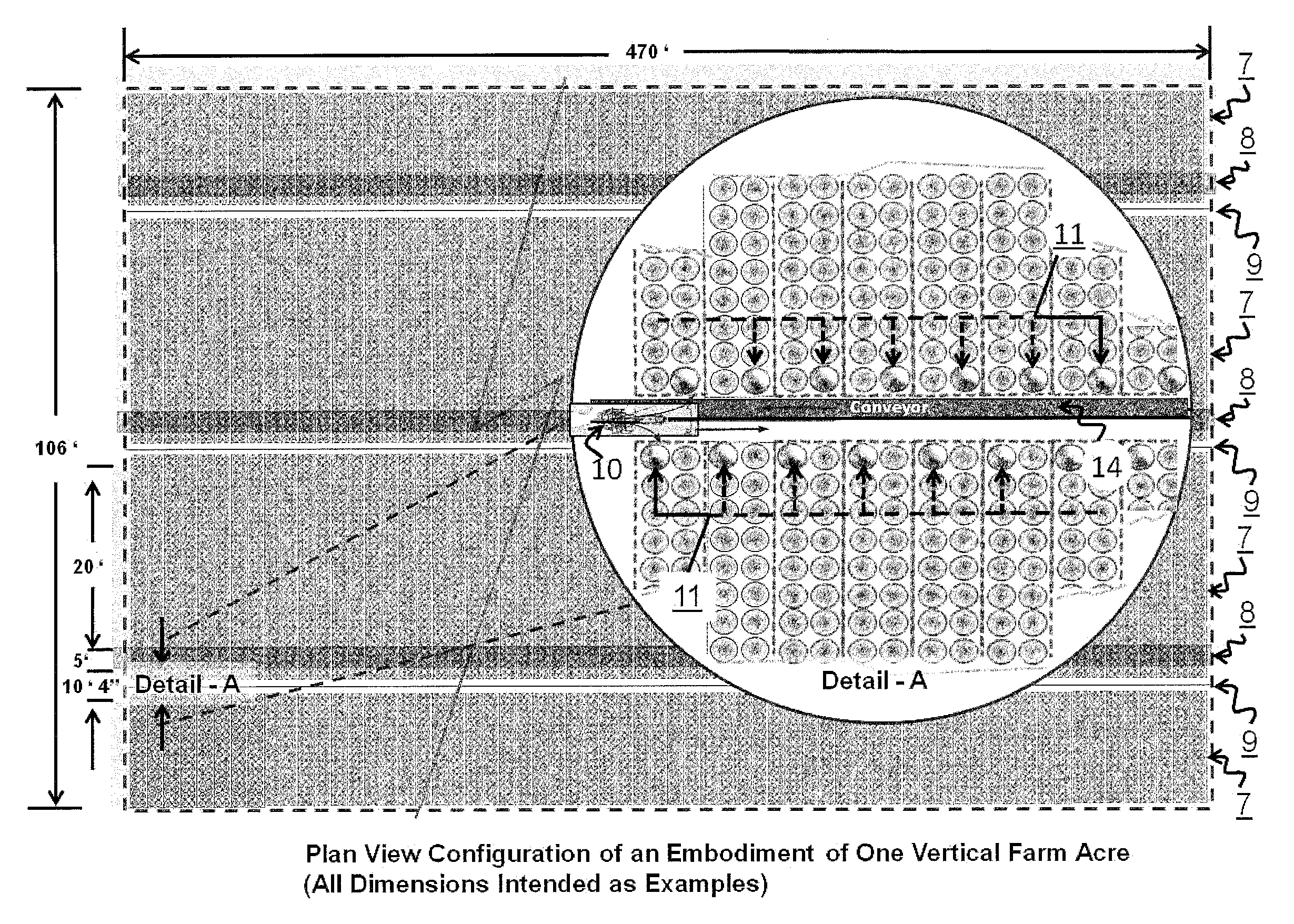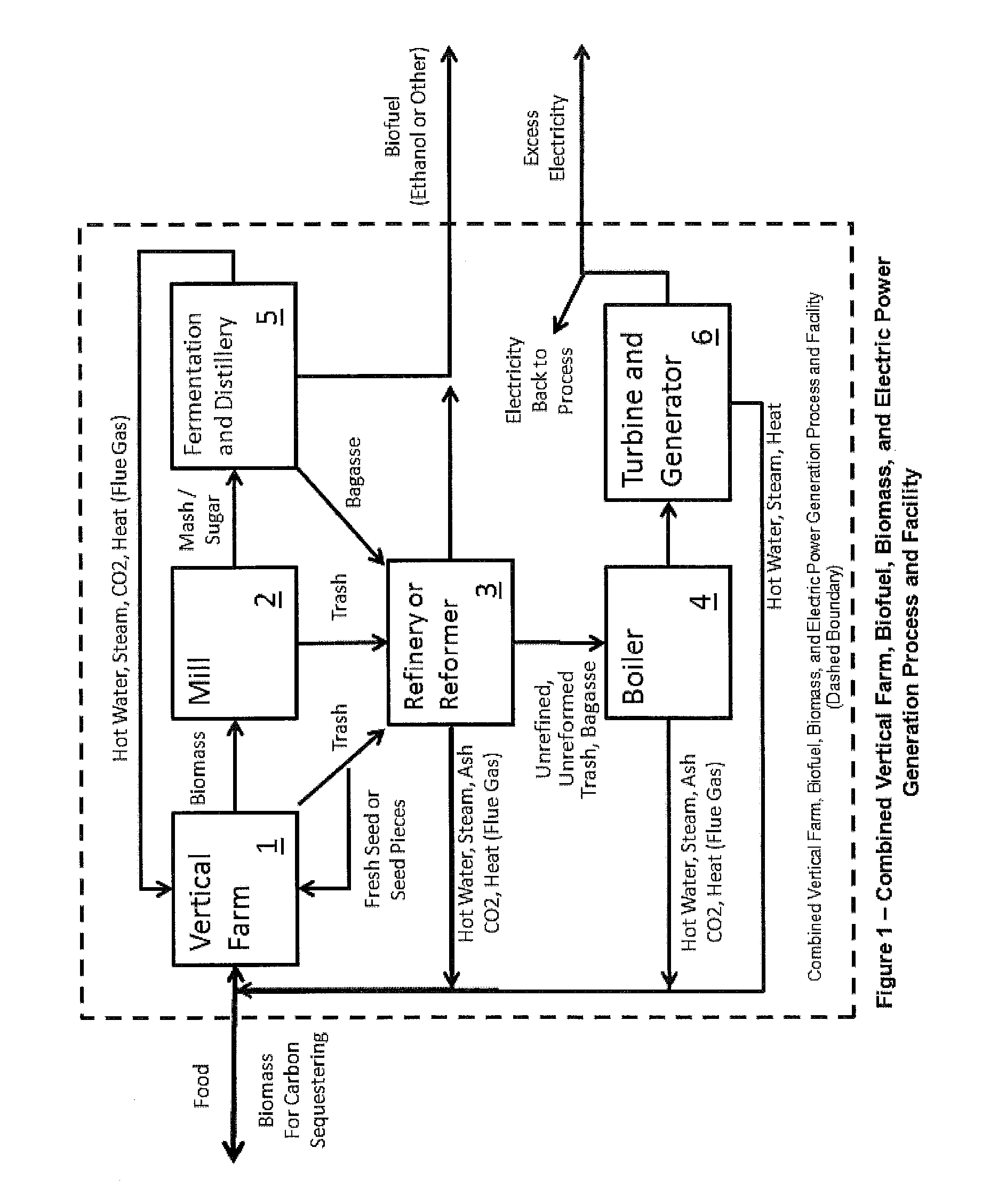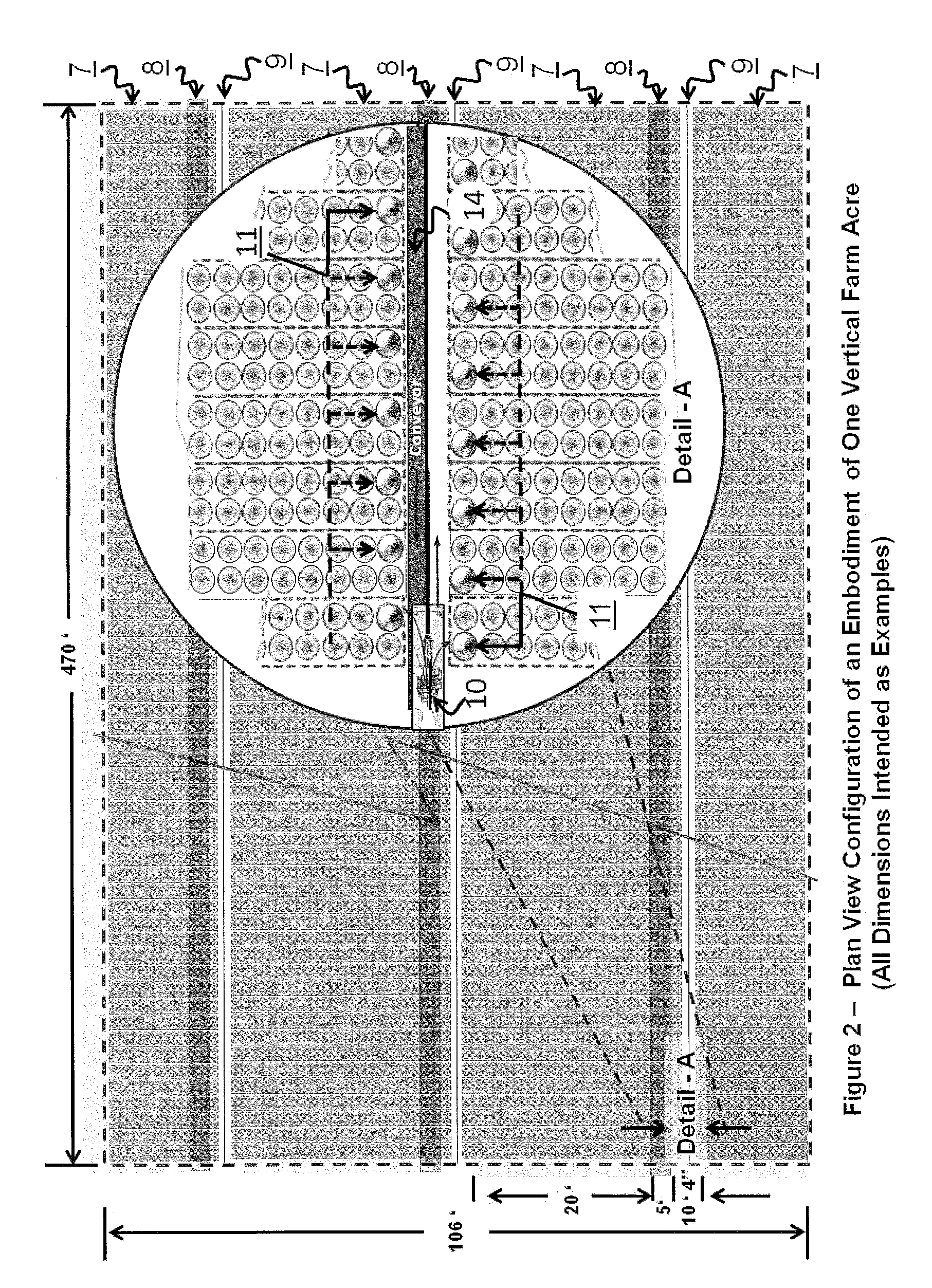Combined Vertical Farm, Biofuel, Biomass, and Electric Power Generation Process and Facility
a technology of electric power generation and vertical farms, applied in the direction of incinerator equipment, combustion types, lighting and heating equipment, etc., can solve the problems of not addressing the optimal characteristics and symbiotic processes, failing to produce a continuous automatable system, and no space in the design of vegetation to achieve appreciable height, ensuring security and predictable production, and enhancing growing characteristics
- Summary
- Abstract
- Description
- Claims
- Application Information
AI Technical Summary
Benefits of technology
Problems solved by technology
Method used
Image
Examples
Embodiment Construction
[0021]In one embodiment, C4 perennial crops such as corn, sorghum, or sugar cane are grown in high-volume, just-in-time, optimized, year-round, and continuous conditions in a Vertical Farm (1, and FIGS. 2, 3, and 4) housed in a greenhouse (21) as described below. Artificial lighting (22) is provided in order to supplement natural lighting. The foundation or hull (26) of the Vertical Farm (1) may be constructed on land, as a floating platform, or a plurality of platforms. From the Vertical Farm (1), harvested crops are sent for milling (2) or other processing to produce stock for mash. The sugars in the mash are fermented and then distilled in the Fermentation and Distillation (5) process into neat ethanol or other biofuel. Cellulosic material leftover after fermentation of sugars from the mash, or bagasse is dried and combined with organic trash from the Vertical Farm (1) and the Milling (2) operations. This combined organic, predominantly cellulosic material is sent either to a Ref...
PUM
 Login to View More
Login to View More Abstract
Description
Claims
Application Information
 Login to View More
Login to View More - R&D
- Intellectual Property
- Life Sciences
- Materials
- Tech Scout
- Unparalleled Data Quality
- Higher Quality Content
- 60% Fewer Hallucinations
Browse by: Latest US Patents, China's latest patents, Technical Efficacy Thesaurus, Application Domain, Technology Topic, Popular Technical Reports.
© 2025 PatSnap. All rights reserved.Legal|Privacy policy|Modern Slavery Act Transparency Statement|Sitemap|About US| Contact US: help@patsnap.com



